Check out which iPhone innovations are borrowed.

Fake Innovation: The Top 7 Features The iPhone Has Taken From Competitors.
They began to work on the creation of the first iPhone back in 2005. Then the team of specialists worked under the leadership of Apple CEO Steve Jobs and designer Jonathan Ive. As a result, the new generation smartphone was presented on January 9, 2007 at the major Macworld exhibition and conference in San Francisco, dedicated to the Apple Macintosh platform and other products of the technology giant.
And on June 29, 2007, sales of the first iPhone started. Then Steve Jobs said that “this is just the beginning,” and he was not mistaken. 12 years have passed since then. Today, the iPhone is at the forefront of modern smartphones. However, the Cupertinians themselves are not pioneers in everything and often rework existing technologies for themselves. Editorial PaySpace Magazine brought together a selection of some of the iPhone technologies that Apple borrowed from other smartphones.
Dual SIM
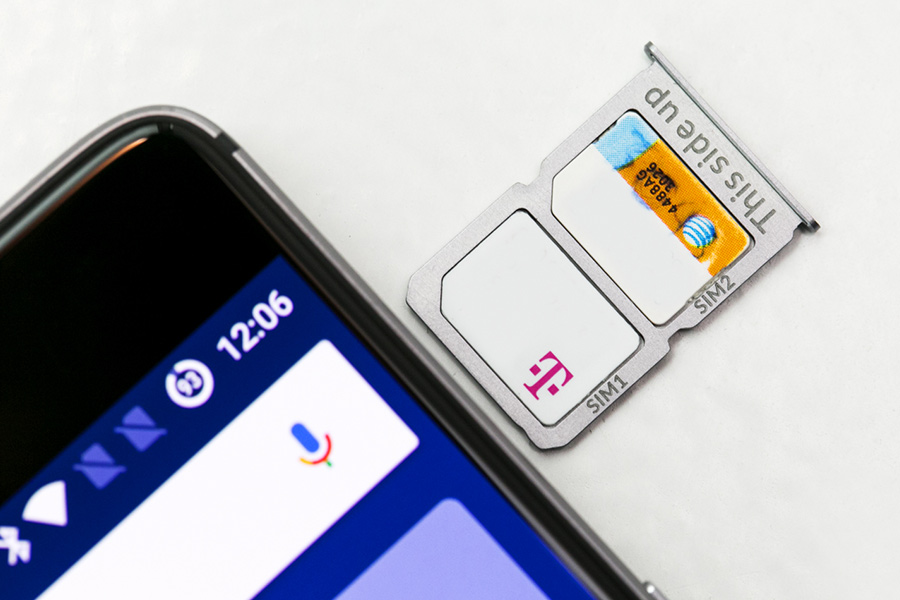
Support for two SIM cards.
Apple introduced the dual-SIM iPhone for the first time in its history only last September. IPhone XS and iPhone XS Max users can take advantage of this benefit. At the same time, Android smartphones have a dual SIM slot for about ten years.
NFC chip
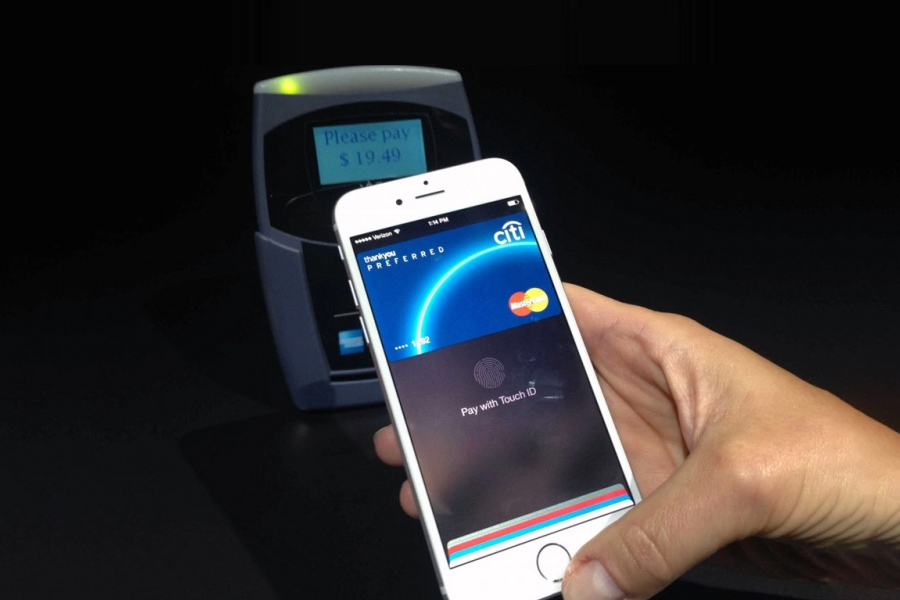
NFC chip on Apple smartphones.
The iPhone 6 is the first Apple smartphone introduced in September 2014 to feature an NFC chip. Thanks to the introduction of technology, you can easily pay with your phone. Despite the fact that mobile payments have become popular and in demand recently, this functionality has already been implemented in many Android smartphones, for example, in the Samsung Galaxy S3, released in 2012.
NFC is useful in a smartphone for more than just making payments. Apple recently announced the release of a new version of the IOS 13 operating system with expanded support for the NFC tag reading function. So, the Japanese government decided to take advantage of this innovation: therefore, now the iPhone can read data from the ID-cards of the country's residents.
Face id
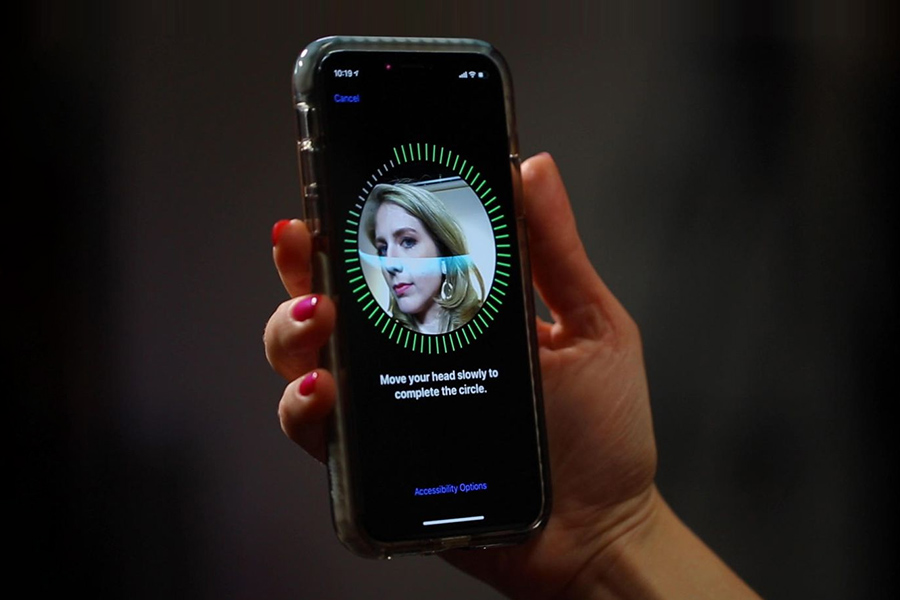
Face ID on iPhone.
Biometric identification has been around for a long time on Android smartphones - at least even before the iPhone got the Touch ID sensor. So, in 2012, in the version of Android 4.0 Ice Cream Sandwich, a face scan function was introduced in order to unlock the phone. But, then the smartphone could recognize the face of its owner only in good lighting. In the dark, this feature did not work, since there was no special hardware to implement it. Android 4.1 Jelly Bean received improved functionality, but it could be easily fooled.
It was the Samsung Galaxy Note 7 that became the first smartphone to be equipped with an iris scanner. The device could be easily unlocked with such a biometric solution even in low light conditions. However, it was also possible to get around it without the use of additional equipment.
Apple Face ID is available on iPhone X and newer smartphones. This system is more secure. There were also attempts to cheat the technology, but it turned out to be much more difficult compared to Android smartphones.
Tap to wake
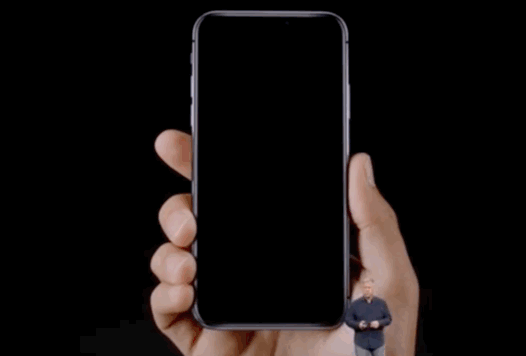
Tap to Wake function on iPhone X.
With this function, you can activate your smartphone with one or two touches to the screen. This functionality became popular thanks to the LG G2 smartphone, announced in 2013, which had the Knock Knock function. Since then, many Android smartphones have started using such an easy way to activate the phone. This functionality is especially useful in those smartphones that have a fingerprint scanner on the back (and this is the majority of Android phones).
Tap to Wake was introduced on the iPhone X and all of the following Apple smartphones. The company was faced with the large dimensions of the phone, so it decided to use an existing solution. The aspect ratio of the iPhone X is 18: 9 and it is not very convenient to reach the side key on the device panel to “wake it up”. And thanks to Tap to Wake, activating your phone is much easier.
Water resistance
The waterproof and dustproof function has long been introduced in Sony Xperia smartphones. But, as it turned out, these devices are not suitable for underwater photography. In 2015, when the Galaxy S5 smartphone was released, Samsung began to use this feature in its other models as well.

Since 2011, AppleCare + has included full compensation for accidental damage to the iPhone. This warranty also covered damage to the device due to water ingress. However, the iPhone 7 and the following Apple innovations already included water and dust resistance. And instead of pushing ahead with such an attractive feature of the iPhone, the company decided to absolve itself of responsibility for water damage. Despite this, many users of Apple smartphones are pleased with the appearance of this function. After all, it is undoubtedly useful if the device accidentally gets wet.
Wireless charger
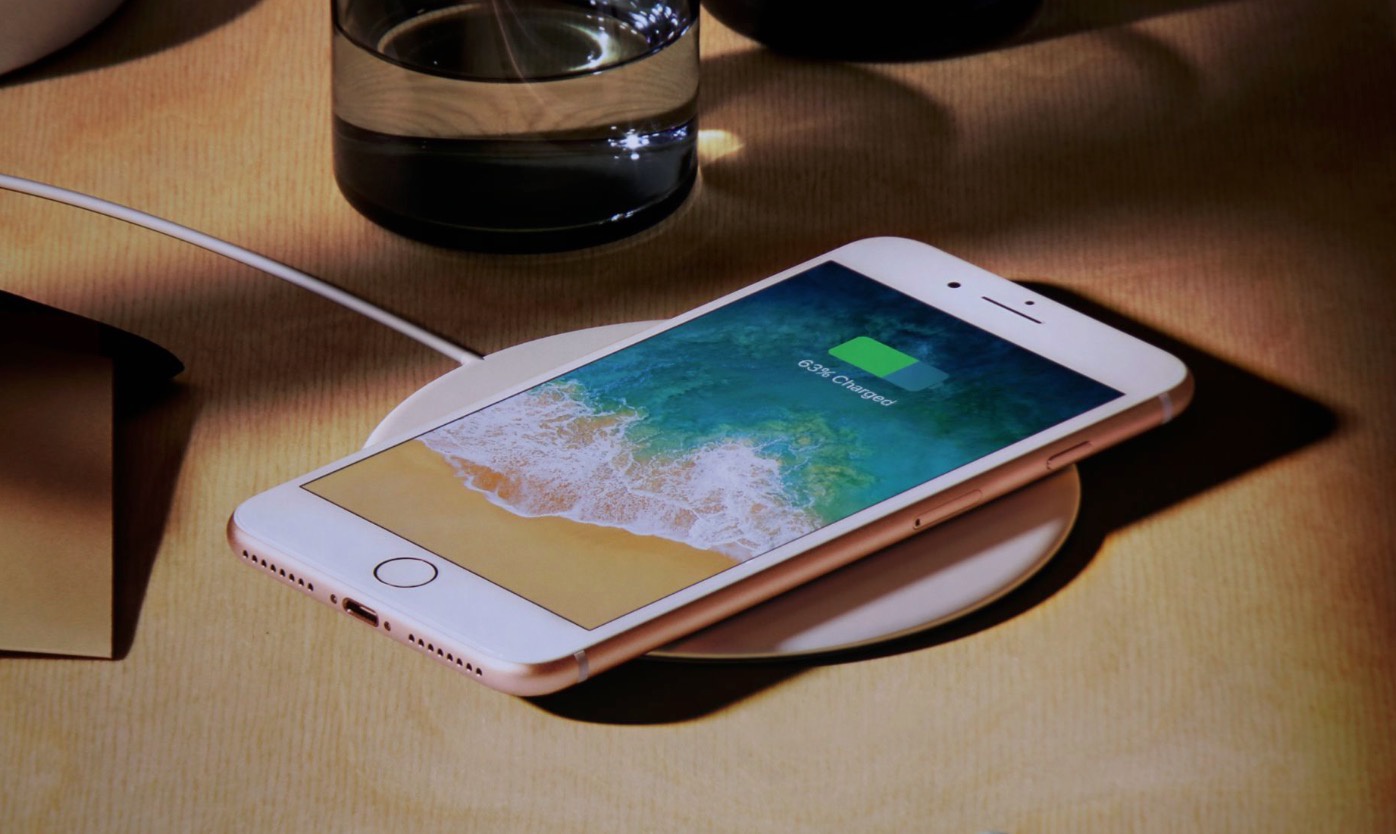
Qi wireless charging.
Apple announced support for wireless charging according to the Qi standard during the presentation of the iPhone 8, iPhone 8 Plus and iPhone X. But, Android smartphones are significantly ahead of the "apple" giant, because this opportunity appeared in such devices back in 2011. It was LG phones that became the first devices to use wireless charging. Later, Samsung began to implement this solution for its smartphones.
OLED technology
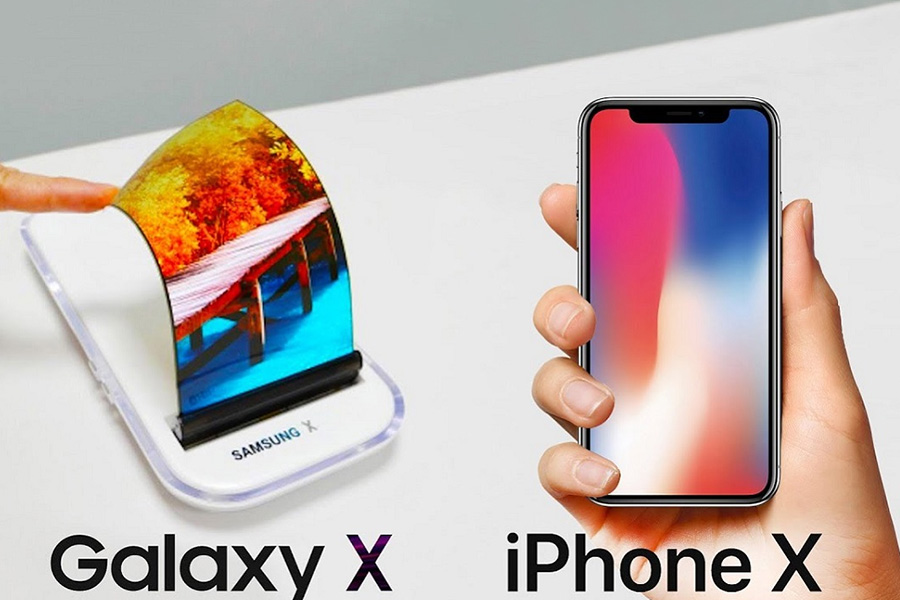
OLED displays on Android and IOS smartphones.
OLED displays appeared on smartphones Samsung, HTC, LG, OnePlus, Huawei and others long before Apple. Due to these characteristics, these screens have a high contrast ratio and are energy efficient compared to liquid crystal displays.
Apple introduced OLED technology quite late. It appeared on the iPhone X smartphones. During the presentation of this mobile phone model, the company's chief marketing officer explained why Apple had not implemented it earlier. He said OLED screens have low brightness and do not display a wide range of colors. So they decided to improve them and designed the iPhone with the first OLED screen “worthy of the Apple brand”.
Why is Apple lagging behind the competition?
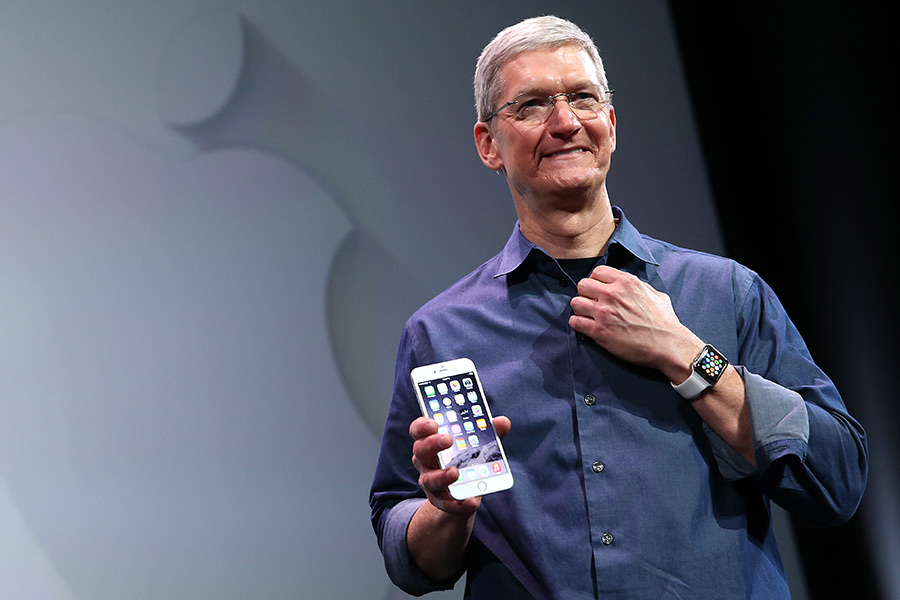
Why is Apple lagging behind the competition?
Apple has a huge following worldwide. During the release of new iPhone models, users of these devices are ready to stand in line for days to purchase a gadget. But at that moment, as smartphones from other manufacturers have wide functionality - support for two SIM cards, NFC, wireless charging, etc. - Apple is in no hurry to develop something super-innovative and overtake competitors. At the same time, the company's smartphones are not at all cheaper than those of other well-known manufacturers.
Apple CEO Tim Cook explained in one of his interviews to Bloomberg why the company is in no hurry to innovate in its products. In his opinion, this is not a bad trend. Tim says Apple is not primarily focused on releasing innovative gadgets, but on providing users with a product that will truly change their lives for the better.
First of all, at Apple, we focus on long-term development and are in no hurry to be ahead of the competition. Our product should be better than the rest and change the lives of users for the better. We do not feel urgency, and competition has nothing to do with it. When you look back in time, the iPod was not the first MP3 player. The iPhone was not the first smartphone. iPad wasn't the first tablet

Fake Innovation: The Top 7 Features The iPhone Has Taken From Competitors.
They began to work on the creation of the first iPhone back in 2005. Then the team of specialists worked under the leadership of Apple CEO Steve Jobs and designer Jonathan Ive. As a result, the new generation smartphone was presented on January 9, 2007 at the major Macworld exhibition and conference in San Francisco, dedicated to the Apple Macintosh platform and other products of the technology giant.
And on June 29, 2007, sales of the first iPhone started. Then Steve Jobs said that “this is just the beginning,” and he was not mistaken. 12 years have passed since then. Today, the iPhone is at the forefront of modern smartphones. However, the Cupertinians themselves are not pioneers in everything and often rework existing technologies for themselves. Editorial PaySpace Magazine brought together a selection of some of the iPhone technologies that Apple borrowed from other smartphones.
Dual SIM

Support for two SIM cards.
Apple introduced the dual-SIM iPhone for the first time in its history only last September. IPhone XS and iPhone XS Max users can take advantage of this benefit. At the same time, Android smartphones have a dual SIM slot for about ten years.
NFC chip

NFC chip on Apple smartphones.
The iPhone 6 is the first Apple smartphone introduced in September 2014 to feature an NFC chip. Thanks to the introduction of technology, you can easily pay with your phone. Despite the fact that mobile payments have become popular and in demand recently, this functionality has already been implemented in many Android smartphones, for example, in the Samsung Galaxy S3, released in 2012.
NFC is useful in a smartphone for more than just making payments. Apple recently announced the release of a new version of the IOS 13 operating system with expanded support for the NFC tag reading function. So, the Japanese government decided to take advantage of this innovation: therefore, now the iPhone can read data from the ID-cards of the country's residents.
Face id

Face ID on iPhone.
Biometric identification has been around for a long time on Android smartphones - at least even before the iPhone got the Touch ID sensor. So, in 2012, in the version of Android 4.0 Ice Cream Sandwich, a face scan function was introduced in order to unlock the phone. But, then the smartphone could recognize the face of its owner only in good lighting. In the dark, this feature did not work, since there was no special hardware to implement it. Android 4.1 Jelly Bean received improved functionality, but it could be easily fooled.
It was the Samsung Galaxy Note 7 that became the first smartphone to be equipped with an iris scanner. The device could be easily unlocked with such a biometric solution even in low light conditions. However, it was also possible to get around it without the use of additional equipment.
Apple Face ID is available on iPhone X and newer smartphones. This system is more secure. There were also attempts to cheat the technology, but it turned out to be much more difficult compared to Android smartphones.
Tap to wake

Tap to Wake function on iPhone X.
With this function, you can activate your smartphone with one or two touches to the screen. This functionality became popular thanks to the LG G2 smartphone, announced in 2013, which had the Knock Knock function. Since then, many Android smartphones have started using such an easy way to activate the phone. This functionality is especially useful in those smartphones that have a fingerprint scanner on the back (and this is the majority of Android phones).
Tap to Wake was introduced on the iPhone X and all of the following Apple smartphones. The company was faced with the large dimensions of the phone, so it decided to use an existing solution. The aspect ratio of the iPhone X is 18: 9 and it is not very convenient to reach the side key on the device panel to “wake it up”. And thanks to Tap to Wake, activating your phone is much easier.
Water resistance
The waterproof and dustproof function has long been introduced in Sony Xperia smartphones. But, as it turned out, these devices are not suitable for underwater photography. In 2015, when the Galaxy S5 smartphone was released, Samsung began to use this feature in its other models as well.

Since 2011, AppleCare + has included full compensation for accidental damage to the iPhone. This warranty also covered damage to the device due to water ingress. However, the iPhone 7 and the following Apple innovations already included water and dust resistance. And instead of pushing ahead with such an attractive feature of the iPhone, the company decided to absolve itself of responsibility for water damage. Despite this, many users of Apple smartphones are pleased with the appearance of this function. After all, it is undoubtedly useful if the device accidentally gets wet.
Wireless charger

Qi wireless charging.
Apple announced support for wireless charging according to the Qi standard during the presentation of the iPhone 8, iPhone 8 Plus and iPhone X. But, Android smartphones are significantly ahead of the "apple" giant, because this opportunity appeared in such devices back in 2011. It was LG phones that became the first devices to use wireless charging. Later, Samsung began to implement this solution for its smartphones.
OLED technology

OLED displays on Android and IOS smartphones.
OLED displays appeared on smartphones Samsung, HTC, LG, OnePlus, Huawei and others long before Apple. Due to these characteristics, these screens have a high contrast ratio and are energy efficient compared to liquid crystal displays.
Apple introduced OLED technology quite late. It appeared on the iPhone X smartphones. During the presentation of this mobile phone model, the company's chief marketing officer explained why Apple had not implemented it earlier. He said OLED screens have low brightness and do not display a wide range of colors. So they decided to improve them and designed the iPhone with the first OLED screen “worthy of the Apple brand”.
Why is Apple lagging behind the competition?

Why is Apple lagging behind the competition?
Apple has a huge following worldwide. During the release of new iPhone models, users of these devices are ready to stand in line for days to purchase a gadget. But at that moment, as smartphones from other manufacturers have wide functionality - support for two SIM cards, NFC, wireless charging, etc. - Apple is in no hurry to develop something super-innovative and overtake competitors. At the same time, the company's smartphones are not at all cheaper than those of other well-known manufacturers.
Apple CEO Tim Cook explained in one of his interviews to Bloomberg why the company is in no hurry to innovate in its products. In his opinion, this is not a bad trend. Tim says Apple is not primarily focused on releasing innovative gadgets, but on providing users with a product that will truly change their lives for the better.
First of all, at Apple, we focus on long-term development and are in no hurry to be ahead of the competition. Our product should be better than the rest and change the lives of users for the better. We do not feel urgency, and competition has nothing to do with it. When you look back in time, the iPod was not the first MP3 player. The iPhone was not the first smartphone. iPad wasn't the first tablet
